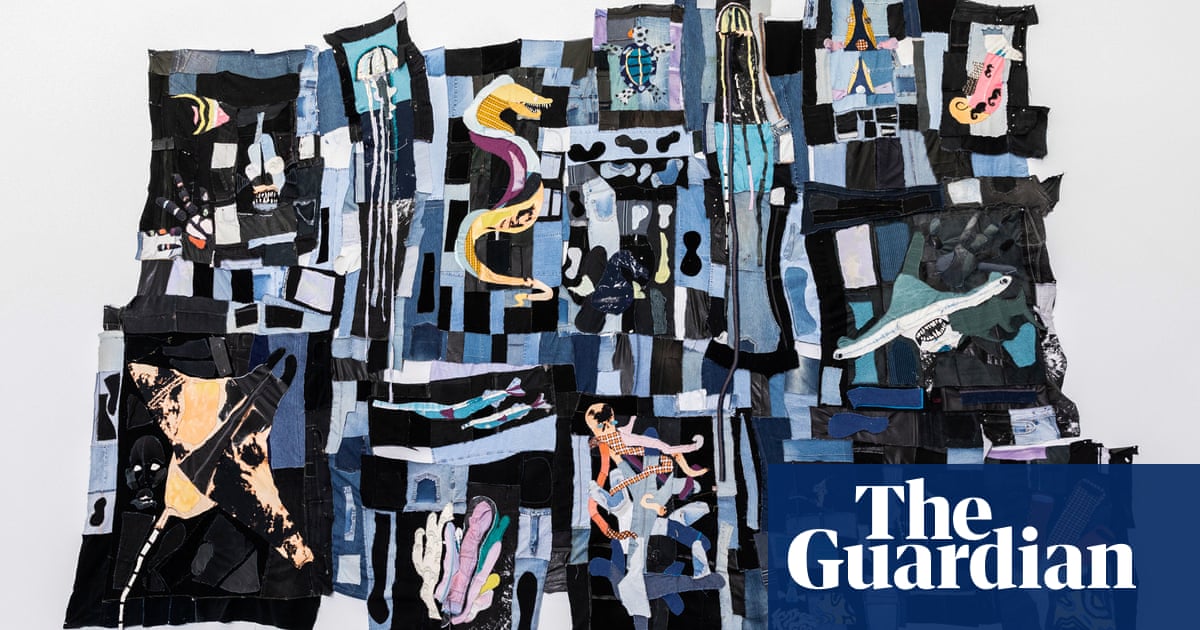Once perceived as a less innovative field due to its association with craftsmanship and household chores, textile or fiber art has now risen to prominence as a significant medium in contemporary art. The extensive and diverse experiments with fiber by the octogenarian artist filled Paris’s Pompidou Centre with a rainbow of colors in 2018, while the large, mystical rope sculptures by the late Polish artist left a haunting impression at London’s Tate Modern in 2022.
These prominent figures are now featured in a comprehensive survey that delves into the movement’s intergenerational dynamics, showcasing everything from intricately hand-embroidered handkerchiefs to large-scale sculptural installations. Lotte Johnson, one of the curators of the exhibition, emphasizes the expansive nature of textiles as a term, exploring how cultural dialogues and personal connections resonate across different geographies and eras.
Central to the exhibition is textiles’ capacity for conveying political messages. Originating in the 1960s, fiber art notably saw feminist artists repurposing “women’s work” for subversive purposes. Judy Chicago, a celebrated artist from that era, collaborated with needleworkers to depict the intense physical aspects of childbirth in her series from the 1980s. This early exploration foreshadowed contemporary artists’ investigations into identity and the human form, exemplified by South African artist Nicholas Hlobo’s provocative anthropomorphic creations using leather and ribbon on canvas. Johnson notes that Hlobo’s choice of ribbons symbolizes both women’s attire and the potential for rebellion, crucial for his exploration of sexuality as a gay man.
For many artists confronting legacies of violence and discrimination, like Hlobo, stitching represents a form of healing, whether through the symbolic closure of wounds or the unifying power of communal creation. The exhibition features historical works such as the burlap creations with applique and patchwork by ‘arpillaristas’, anonymous women’s groups in Chile who gathered in communal spaces to express their experiences under Pinochet’s regime.
Textiles serve as repositories of ancestral and personal memories, from Choctaw-Cherokee artist Jeffrey Gibson’s playful reinterpretation of traditional Native American garments to Cecilia Vicuña’s incorporation of ancient techniques. Quilts, a recurring motif, are exemplified by the renowned works of African American women who transformed old garments into bedspreads on former plantations. Artist Faith Ringgold, known for her storytelling quilts, uses quilting as a medium to protest racial oppression in the United States through hybrid textile-paintings.
“Why are textiles so evocative?” Johnson muses. “They are intertwined with our existence from birth, enveloping our bodies and serving as tools for communication and resistance, offering a means to reimagine our world.”
Notable Textile Works in the Exhibition

Sheila Hicks, Family Treasures, 1993: A pioneer in fiber art, Hicks’ creations range from monumental to miniature. These jewel-like bundles of repurposed fabric from her circle symbolize the historical practice of recycling textiles into new forms and functions.
Tau Lewis, The Coral Reef Preservation Society, 2019 (main image): Lewis’s expansive piece crafted from denim remnants envisions the enslaved individuals thrown overboard during the “middle passage” as marine creatures. Through this work, she evokes the troubling histories of cotton plantations and indigo dye production under the British empire in India.

Tschabalala Self, Koco at the Bodega, 2017: Influenced by Faith Ringgold, Self explores the significance of Harlem’s bodegas in this textile painting series, portraying ordinary Black women in these urban corner shops with profound economic and political implications.

Tracey Emin, No Chance (What a Year) 1999: Emin’s applique blanket, despite its cozy appearance, conveys a deeper message. Through blocky lettering, she expresses the trauma and anger stemming from her teenage rape experience, subverting the conventional notions of comfort and safety.

Faith Ringgold, Tar Beach 2 1990: A pioneer of “story quilts,” Ringgold revisits her childhood memories of Harlem in this piece, narrating the adventures of a young African American girl, Cassie Louise Lightfoot. It infuses youthful dreams with a touch of fantasy.
Unravel: The Power and Politics of Textiles in Art is on display at London’s [Venue], running from February 13 to May 26.
